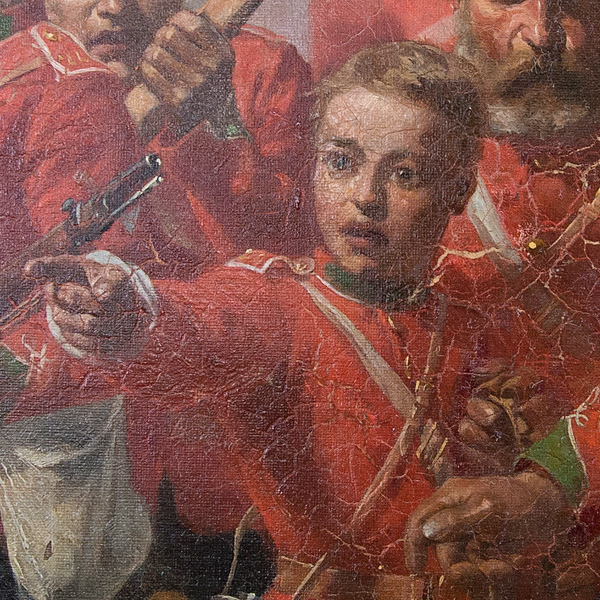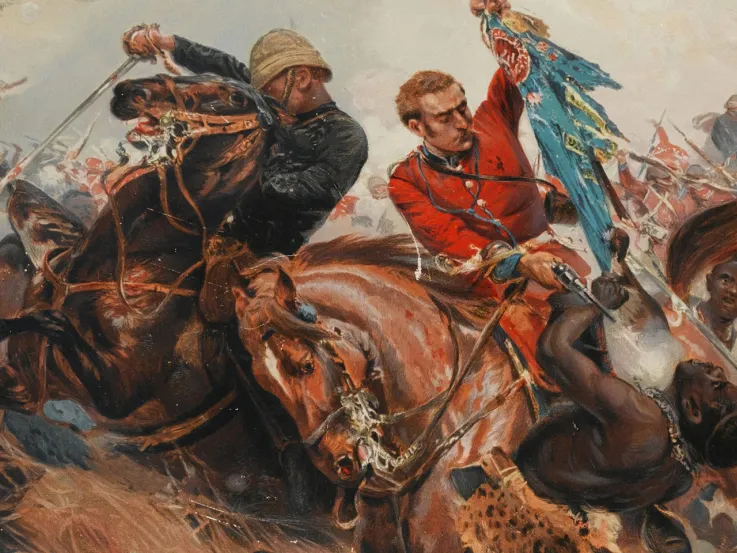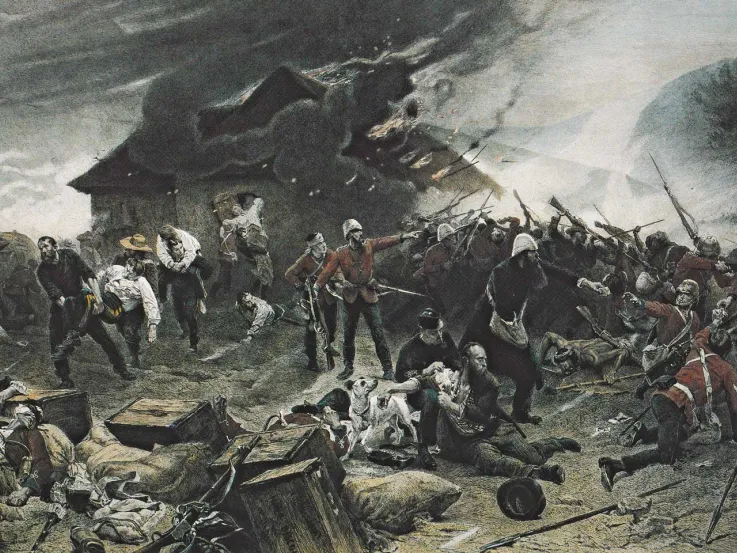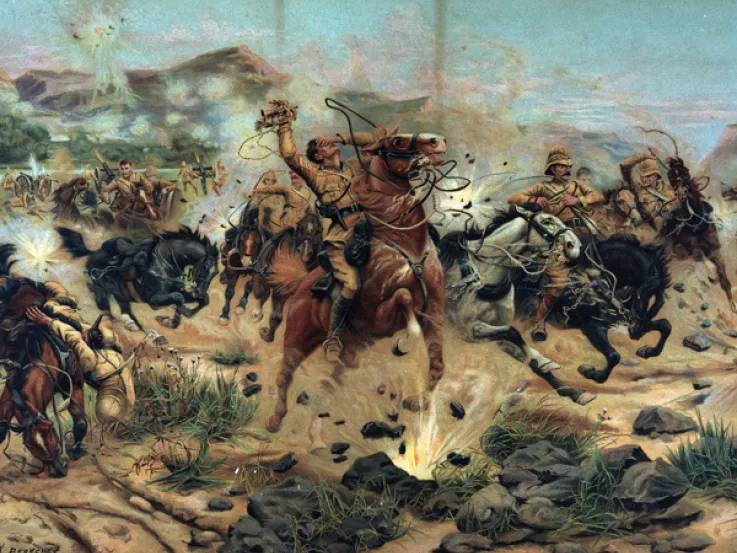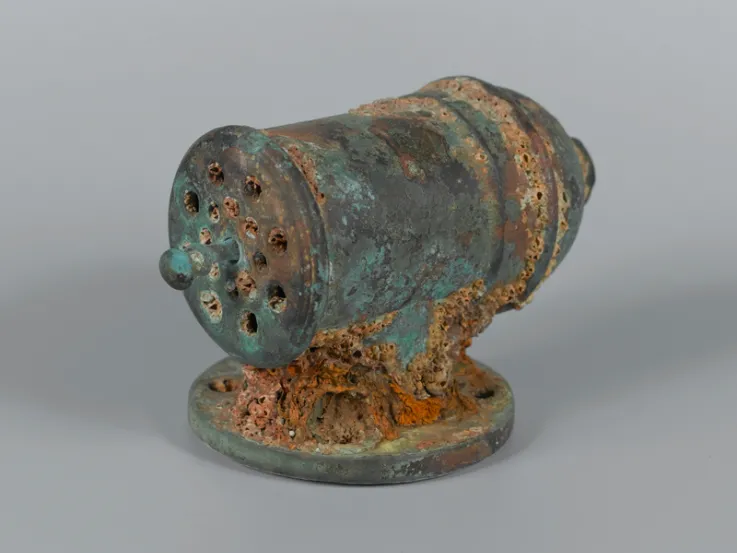The painting
'The Battle of Isandlwana' was painted by the British artist Charles Edwin Fripp. It depicts a disastrous British defeat at the hands of King Cetshwayo's Zulu army.
Fripp travelled to Zululand in March 1879 as the 'special artist' for 'The Graphic', a weekly illustrated newspaper. When he visited the battlefield four weeks after the defeat, bodies still lay unburied and decomposing on the ground.
The painting made little impact when it was first exhibited in 1885, despite Fripp's depiction being more heroic than the battle must actually have been. For the British public, Isandlwana was an embarrassing defeat, already fading from memory.
The battle
The Zulu War began in 1879 when Lieutenant-General Lord Chelmsford entered Zululand in a move to 'persuade' the Zulus to cooperate in a federation of British colonies in South Africa.
The invasion force was split into three columns. Chelmsford's own column crossed the Buffalo River at Rorke's Drift mission station to seek out the Zulu army. It established a temporary base camp at Isandlwana.
On 22 January 1879, Chelmsford led out part of his force to find the Zulus rumoured to be in the area. But he had underestimated his enemy's speed of movement and fighting ability. Just after midday, the inadequately defended camp at Isandlwana was attacked by about 20,000 Zulus. Despite defending themselves bravely, the British were routed.
At home, the Victorian public was shocked by the news that 'spear-wielding savages' had defeated their army.
‘If I am called upon to conduct operations against the Zulus, I shall… show them how hopelessly inferior they are to us in fighting power, although numerically stronger.’Lieutenant-General Lord Chelmsford — 1878
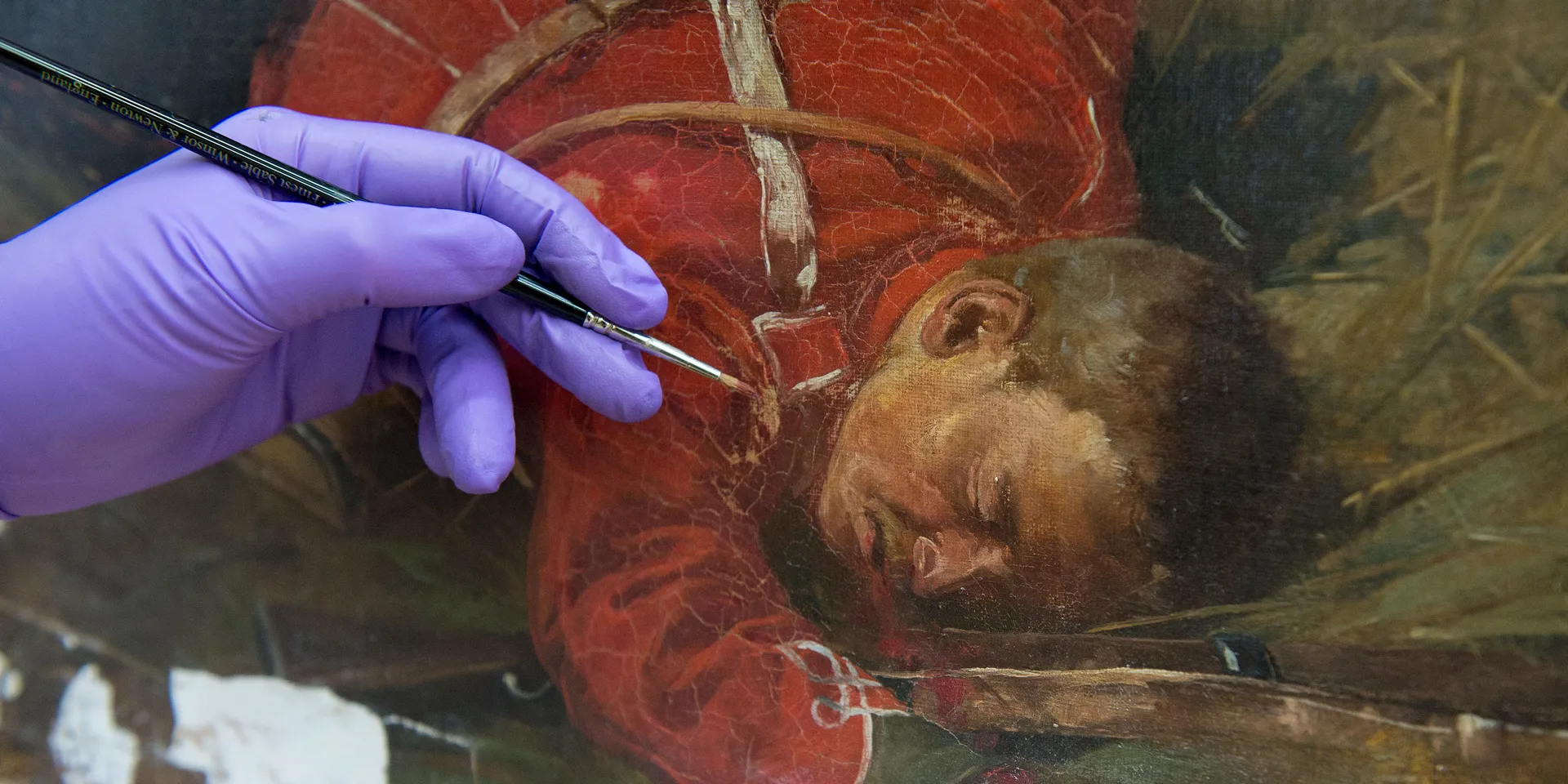
Isandlwana undergoing conservation work, 2016
A fresh coat of paint
'The Battle of Isandlwana' is one of the National Army Museum's most popular paintings. But after many years on display, it was in need of some care.
The painting had been water damaged at the bottom, and parts of the original image were missing. To make matters worse, the original varnish had turned yellow, discolouring the painting and obscuring Fripp's brushstrokes.
Conservators set to work to undo previous touch-ups, and replace them using new reversible techniques. They also removed the surface dirt and re-painted missing sections to restore the monumental painting.
Former glory
By studying historic photographs of the painting, conservators were able to fill in the missing sections. And the removal of the yellow varnish made the original colours more vivid.
The conservation work restored 'Islandlwana' to its former glory and made some of Fripp's more dramatic elements much more visible. For example, the alarmed young drummer boy shows us the fear and panic felt by the British troops during the attack.
However, this detail also reflects the use of artistic licence to evoke emotion. In reality, the drummers at the battle were much older.




